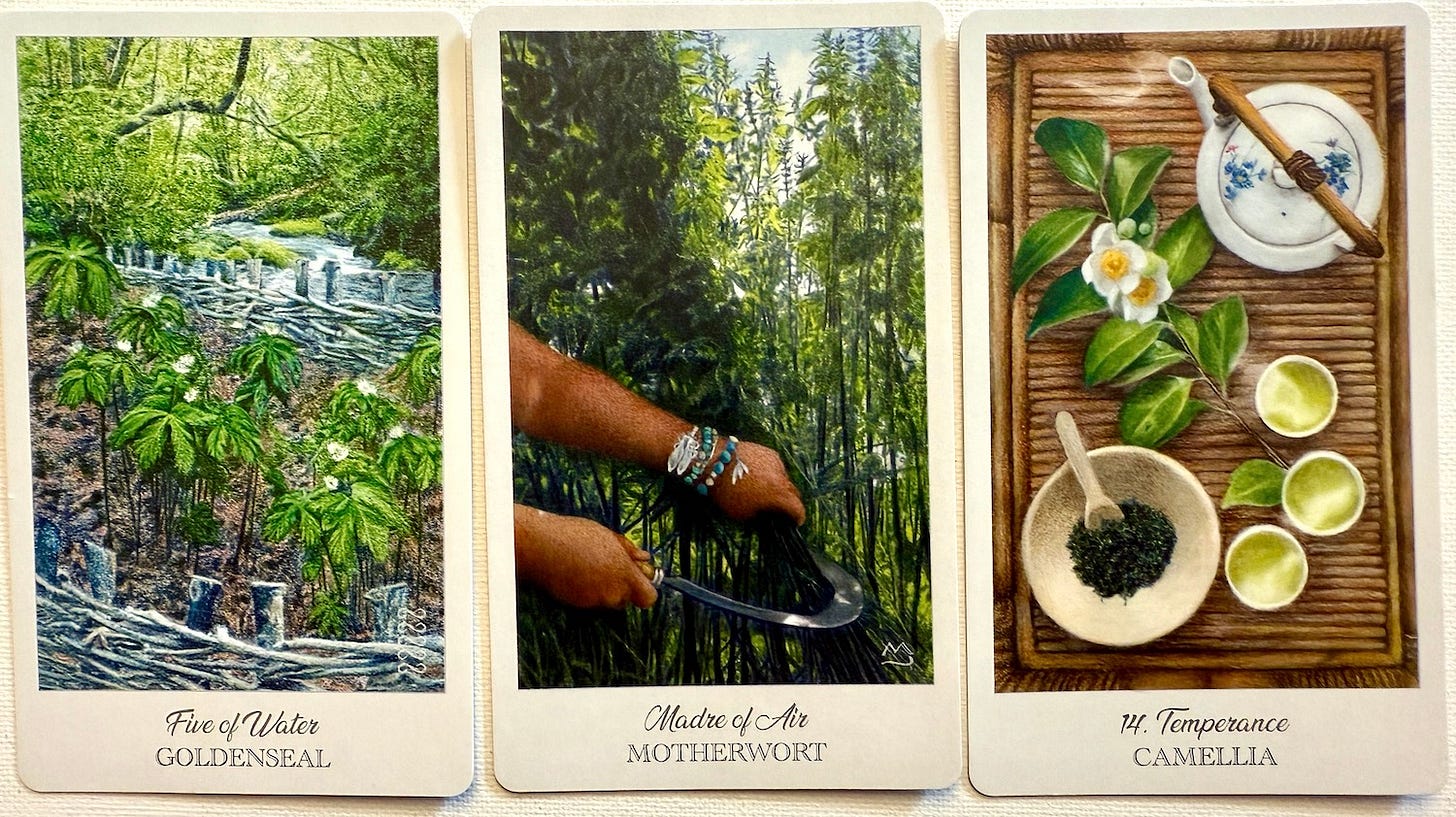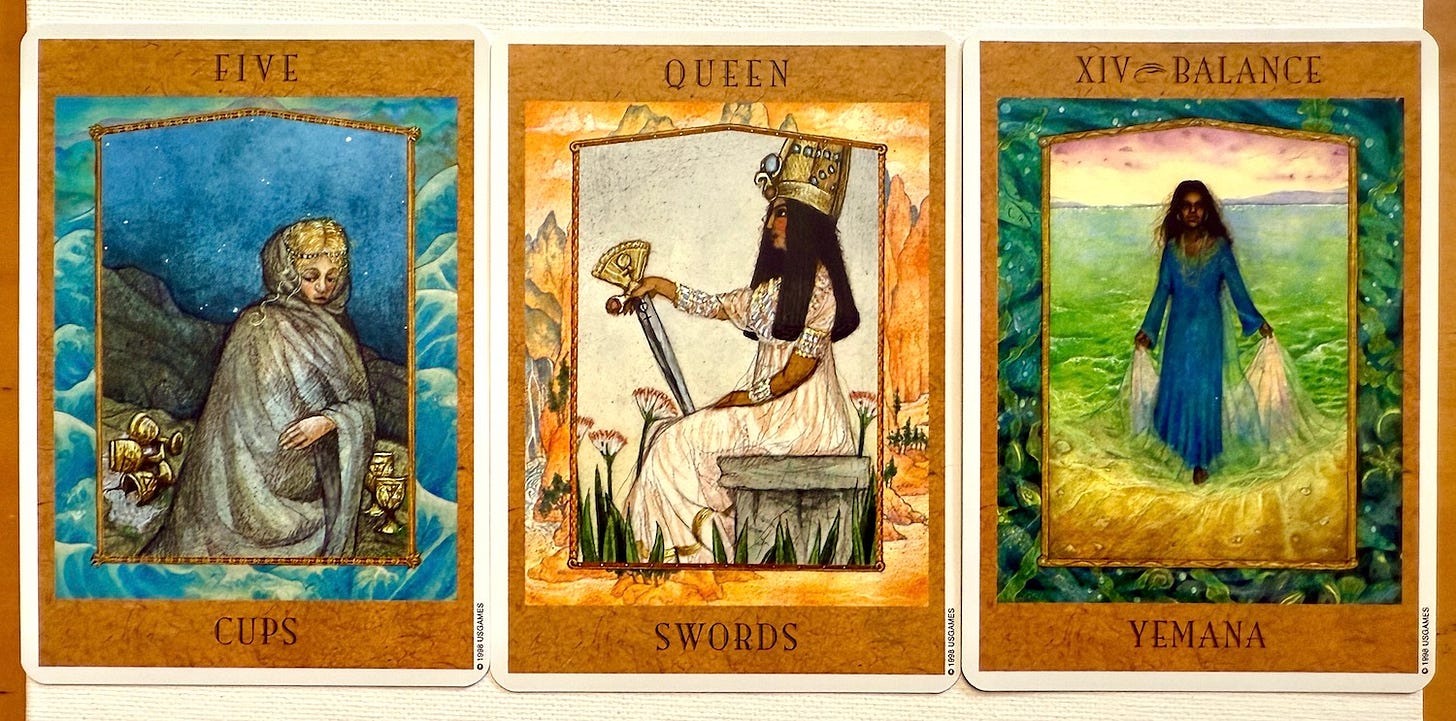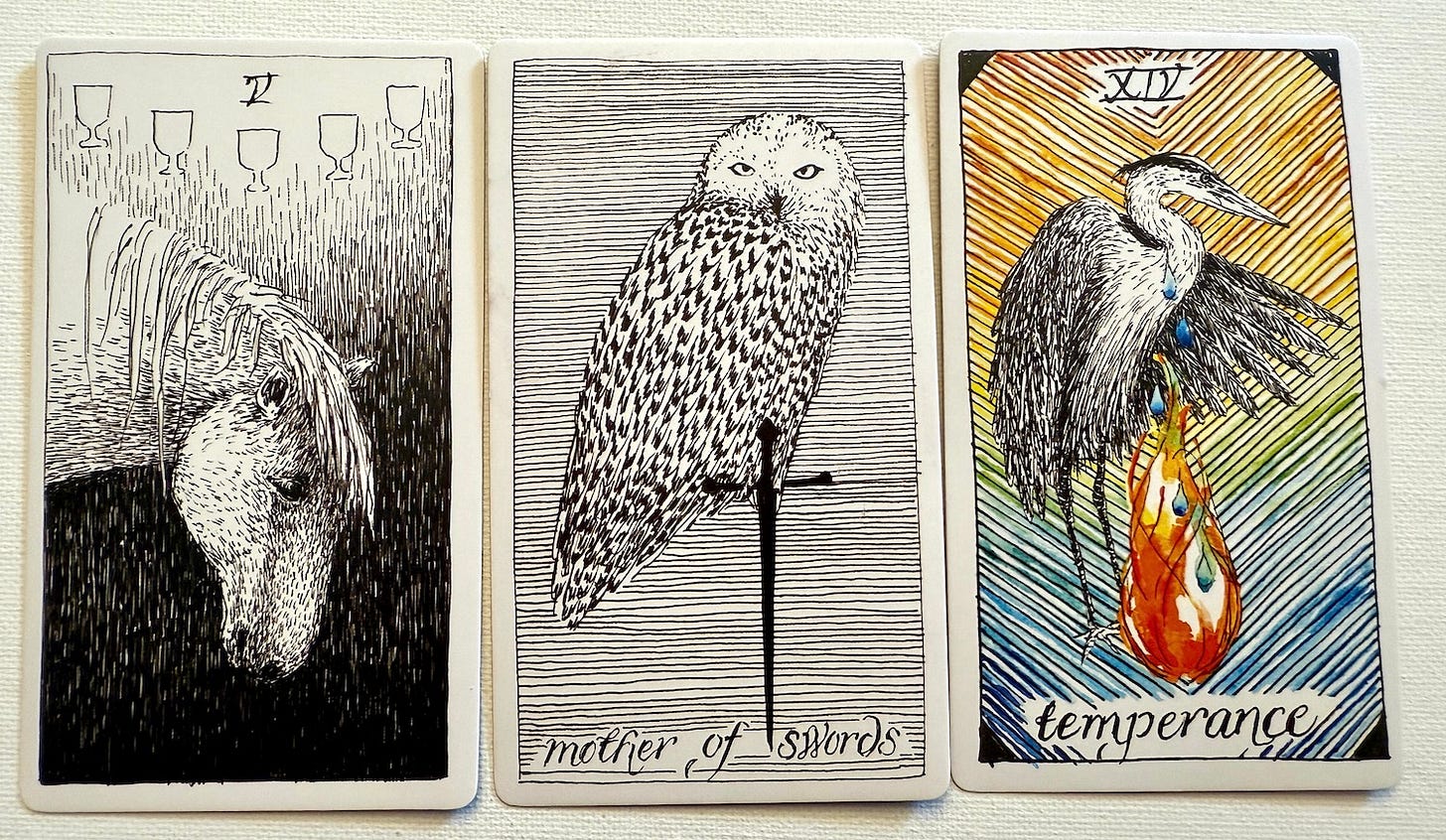If you’re new to Tarot, or if you’ve been reading for a while but feel like you’re just not connecting intuitively with your cards, this tip is for you.
One of the most common questions beginners ask is, “Which Tarot deck should I buy?” Often, they’re told to choose a deck they feel attracted to, or that they should start with a specific deck. Which is fine… except…
Most of us are drawn to things that look beautiful – colours and designs that please our eyes. That’s perfect when buying art for your walls, but when it comes to Tarot decks, especially if you’re just starting out, beauty isn’t always the best guide.
Because here’s the thing: Tarot cards are meant to be read, not just admired for their artwork.
First Step Tips for Choosing a Tarot Deck
To read Tarot intuitively, you need to be able to read the symbols and stories within the card images. The more you understand the subject of the deck, the more naturally your intuition will flow.
In Communication Theory, every symbol has two layers of meaning:
🔹 Denotative (logical) meaning:
This is the straightforward meaning you’ll find in the “Little White Book” that comes with your deck. It’s basic, logical, and foundational, but not deeply intuitive.
🔹 Connotative (intuitive) meaning:
This is the personal meaning you bring to the symbols – drawn from your culture, knowledge, experiences, and life story. This is where intuition awakens.
For example, take Joanna Powell Colbert’s Herbcrafter’s Tarot. It’s stunning, but I know very little about herbs or their healing or magickal properties. When I read with this deck, I have to rely almost entirely on the denotative meanings from the booklet. I have no intuitive insights about herbs to layer onto the reading, so I miss out on a whole dimension of intuitive information.
The same goes for Kris Waldherr’s Goddess Tarot. It’s beautiful, but I don’t have an intuitive relationship with the goddesses in this deck, which limits my ability to read it intuitively.
On the other hand, I’m deeply familiar with the Rider-Waite-Smith (RWS) Tarot. I know its symbols both denotatively and connotatively, so I can read it intuitively with ease. The same is true for decks that follow the RWS symbolism.
So, when you’re choosing your first deck – or if you’re struggling to connect with the one you have – look for a deck with imagery and symbolism you understand or feel connected to. The more familiar the symbols are to you, the easier it will be to read intuitively.
Another Key Tip: Illustrated Minor Arcana vs. Pip Cards
Here’s something else to keep in mind: start with a Tarot deck that has illustrated Minor Arcana cards, not Pip cards.
What does that mean?
Not all Tarot decks have fully illustrated Minor Arcana. In fact, before the Rider-Waite-Smith deck was published in 1909, most Tarot decks only used Pip cards – which are simple suit symbols without scenes or stories.
While Pip decks aren’t as common in North America right now, they’re gaining popularity again. The Wild Unknown Tarot, for example, is a beautiful and well-loved deck that uses Pip-style cards rather than fully illustrated Minor Arcana.
If you’re just starting out, an illustrated deck like the RWS will give you more intuitive clues to read from. The scenes in the Minor Arcana provide stories, emotions, and symbols to connect with – all of which strengthen your intuitive readings.
Each of the images above contain the same three cards, but from different decks. Which image contains cards that you find easier to “read”? Can you identify any similarities between the cards from the different decks?
In Summary
✨ Choose a deck with imagery and symbolism you understand or have an interest in learning deeply.
✨ Start with a deck that has illustrated Minor Arcana to support your intuitive development.
Remember, intuitive Tarot reading is about more than memorizing meanings – it’s about forming a relationship with the images, symbols, and stories on the cards.
Coming next week: Intuitive Tarot Tip #2, which will be posted nest week, will focus on identifying and reading symbols.










